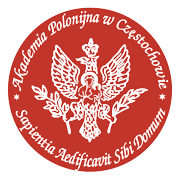CLINICAL AND PATHOGENETIC BASES OF DIFFERENTIATED APPROACH IN THE TREATMENT OF GENERALIZED PERIODONTITIS
Abstrakt
To assess the effectiveness of a differentiated approach in the treatment of generalized periodontitis in women after ovariectomy, the indicators of bone tissue metabolism (bone metabolism markers osteocalcin and oxyproline, and calcium-regulating hormones – calcitonin and parathormone)) in this contingent of patients were investigated. According to the results of the research, it was established the need to distinguish three forms of the activity of the osteoporotic process (low activity, medium and high activity) in the alveolar bone with the subsequent application of individual tactics for the treatment of generalized periodontitis in patients of these groups. According to the obtained results, it was established that with low activity of osteoporosis in the alveolar bone (the presence of weakly active foci), monotherapy with calcium preparations is sufficient for women after total ovariectomy. With medium and high activity (moderately active and active foci of osteoporosis), it is advisable to prescribe, in addition to calcium preparations, antiresorptive agents in combination with drugs that normalize the hormonal background. According to the conducted studies, it is advisable to prescribe the drug Calcium D3 to women with mildly active foci of osteoporosis in the alveolar bone. In the presence of moderately active and active foci of osteoporosis in the alveolar bone, it is recommended to prescribe the drugs Calcium D3 Nikomed, Fosamax and the drug Progynova as a replacement hormone therapy.
Wykaz bibliografii
2. Mazur I.P. (2004) Vzaiemozviazok tkanyn parodontu, pepebihy heneralizovanoho parodontytu ta strukturno-funktsionalnoho stanu kistkovoi systemy [Interrelationship of periodontal tissues, the course of generalized periodontitis and the structural and functional state of the bone system]. Problemy osteolohii. № 1. P. 44-49. [in Ukrainian]
3. Mashchenko I.S. Gorb-Gavrylchenko I.V. (2005) Effektyvnost prymenenyia osteotropnoi y zamestytelnoi hormonalnoi terapyy u zhenshchyn posle totalnoi ovaryoэktomyy, stradaiushchykh heneralyzovannыm parodontytom, v zavysymosty ot aktyvnosty osteoporoznoho protsessa v kostnыkh strukturakh parodonta. [The effectiveness of the use of osteotropic and hormone replacement therapy in women after total ovariectomy suffering from generalized periodontitis, depending on the activity of the osteoporotic process in the bone structures of the periodontium] Visnyk stomatolohii. № 3 (48). P. 26–29. [in Ukrainian]
4. Mashchenko I.S. Samoilenko A.V. (2002) Indeksnaia otsenka osteoporoznoho protsessa v alveoliarnom otrostke bolnыkh heneralyzovannыm parodontytom. [Index assessment of the osteoporotic process in the alveolar process of patients with generalized periodontitis]. Visn. stomatolohii. № 2. P. 8–10. [in Ukrainian]
5. Civitelli R, Ziambaras K. (2011) Calcium and phosphate homeostasis: concerted interplay of new regulators. J Endocrinol Invest.34:3–7.
6. Leder B.Z. (2020) Wein MN, editors. Osteoporosis: Pathophysiology and Clinical Management. Cham. Switzerland: Humana Press. 516 p.
Abstract views: 97 PDF Downloads: 38







